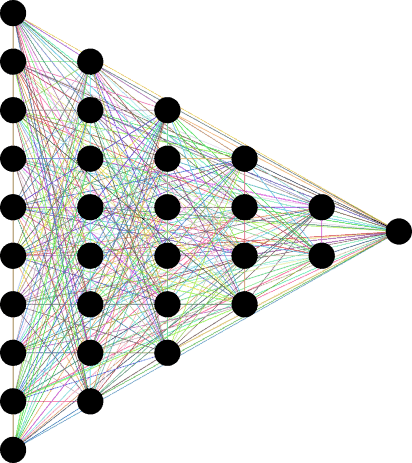
Radionuclide Identifier (RID)
In radiological emergencies, decommissioning of nuclear facilities and monitoring of cargo, borders and potentially contaminated sites, the use of a system for real-time identification of radionuclides present in a given location or sample is necessary to ensure nuclear safety and prevent irregular transport of radioactive materials. Also of interest is the monitoring of radionuclides used for diagnosis and treatment of diseases in nuclear medicine services, of radiotracers used in fluid flow measurement in turbines and heat exchangers, effluent treatment, and evaluation of industrial mixers. In addition, in the exploration and exploitation of mineral resources, gamma and neutron sources need to be monitored when used in the determination of density, porosity, moisture, and hydrocarbon content. For all these scenarios, the International Atomic Energy Agency (IAEA) recommends a priority list of radionuclides to be considered in these situations. The process of radionuclide identification is based on nuclear spectroscopy techniques, using detectors that record the charge or height of electrical pulses generated by radiation from the decay of radionuclides. The registration of these events allows the construction of a distribution of charges as a function of their frequency of occurrence, which is converted into an energy spectrum for the study of the properties of the incident radiation. Thus, spectral analysis allows the identification of radionuclides and the determination of relevant parameters such as activity and emission probability of the radionuclide. The process of radionuclide identification is based on nuclear spectroscopy techniques, using detectors that record the charge or height of electrical pulses generated by radiation from the decay of radionuclides. The registration of these events allows the construction of a distribution of charges as a function of their frequency of occurrence, which is converted into an energy spectrum for the study of the properties of the incident radiation. Thus, spectral analysis allows the identification of radionuclides and the determination of relevant parameters such as activity and emission probability of the radionuclide. Due to the extensive and intensive need for radionuclide monitoring, it is of interest to balance costs with radionuclide identifying devices. In low-cost detectors that have limited energy resolution and low detection efficiency, or when real-time results are desired with minimal exposure to the radioactive source, the radionuclide identification process becomes a challenge. In such cases, where there are overlapping peaks in the spectrum or insufficient statistical event counts, algorithms tend to fail and working with complex samples becomes unfeasible. Based on results obtained in previous research, the use of machine learning methods can enable devices based on these technologies without affecting the reliability of the final results, allowing better decision making. Thus, we are developing a radionuclide identifier device with digital pulse processing based on more economical detectors with lower energy resolution, such as monolithic scintillator crystals coupled to silicon photomultipliers. In this work, the performance of different detectors based on scintillator crystals and silicon photomultipliers will be evaluated with respect to cost and accuracy of radionuclide identification. The signals from the detectors will be digitized and processed in an electronic system for power spectrum generation, quantification and radionuclide identification. The machine learning algorithms for multiple radionuclide identification, developed in previous research, will be applied in an embedded system and the validation and detection tests will be performed in a specialized laboratory.
Development of machine learning algorithms for identification of radioisotopes using nuclear spectroscopy
Situations such as radiological emergencies, decommissioning of nuclear facilities, border surveillance and cargo and sites monitoring requires a radioisotope identification system to ensure the nuclear safety of the country and prevent the irregular transportation of radioactive materials. The U.S. Homeland Security Department recommends a priority list of radionuclides to be considered in these situations. The radioisotope identification is based on nuclear spectroscopy techniques, using detectors that record the time of arrival and peak of electrical pulses generated by the decay radiation. The events recording allows building a distribution of the peaks of electrical pulses according to their frequency of occurrence, which is converted into an energy spectrum for the study of incident radiation properties. Thus, spectral analysis allows the identification of radionuclides and the determination of parameters such as activity and radionuclide emission probability. If the energy peaks of the spectrum are well defined, identifying them through processing algorithms is a relatively easy task. However, when there is an overlap of peaks or insufficient statistics, the algorithms tend to fail, and the process of radioisotope identification becomes a challenge. Such effects occur mainly in low-cost detectors, which have limited energy resolution and reduced detection efficiency, or when the detector's exposure time to the radioactive source is minimal. Due to the extensive and intensive use of ionizing radiation detectors, it is necessary to balance costs with the technical limitations of these systems. Thus, instead of using high-performance, high-cost semiconductor detectors, preference has been given to more economical, lower energy-resolution options, such as scintillator crystals coupled to silicon photomultipliers. However, lower energy resolution increases the probability of overlapping characteristic peaks, making it challenging to identify isotopes in heterogeneous samples by traditional nuclear spectra analysis algorithms. The objective of this project is to develop and evaluate machine learning algorithms for real-time identification of radioisotopes using nuclear spectroscopy techniques. We use of Bayesian neural networks for the identification and quantification of radionuclides in heterogeneous samples, with low-cost scintillation detectors, even in conditions that other algorithms fail, such as overlapping energy peaks or short acquisition time. Several neural network architectures will be evaluated concerning precision in isotope identification. For neural network training, emission spectra database of elements of interest will be simulated using the Geant4 radiation transport code. In this way, neural networks will be able to identify the elements present in a sample by analyzing the energy spectrum as well as determining their respective proportions in the material.